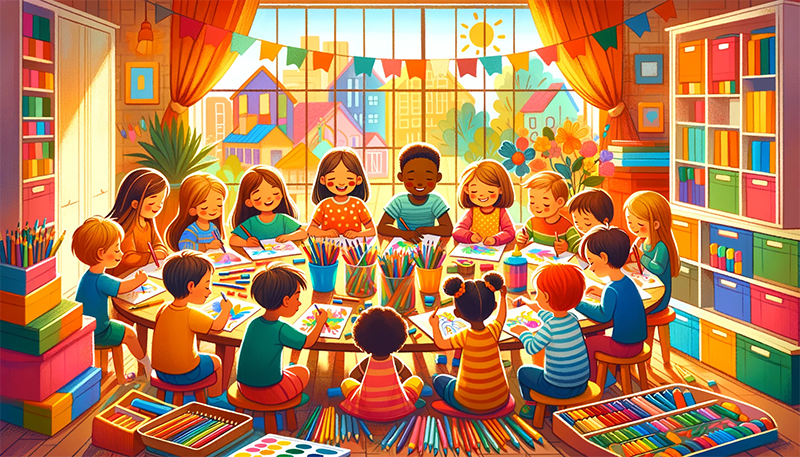
Benefits of Coloring for Child Development
Coloring, often seen as a simple leisure activity, is in fact a powerful developmental tool for children. It not only stimulates creativity but also plays a key role in the development of fine motor skills and emotional well-being. This article explores the numerous benefits of coloring for children of different ages, providing parents and educators with practical advice and insights from experts in child psychology.
The Importance of Coloring in Early Development
Development of Fine Motor Skills
From an early age, coloring helps to refine fine motor skills. Holding a crayon, choosing colors, and filling in a defined space require coordination and precision. These actions contribute to the development of essential muscles in the hands and fingers, preparing the child for writing.
Stimulating Creativity and Personal Expression
Coloring offers children a space for freedom and creative expression. Choosing how to color a picture allows children to communicate their feelings and thoughts, often before they can express them verbally.
Concentration and Relaxation
Coloring can be a meditative activity that helps children develop their concentration ability. The process of choosing colors and focusing on the outlines of an image can have a calming effect, reducing stress and anxiety.
Benefits for School-Aged Children
Reinforcing Academic Learning
For school-aged children, coloring can reinforce learning in subjects such as mathematics and science. For example, coloring diagrams of flowers or animals can complement learning in natural sciences.
Developing Patience and Perseverance
Coloring teaches patience and perseverance, especially when it comes to completing complex images. This skill is essential for academic and personal success.
Problem-Solving Skills
Choosing how to color an image involves decision-making and creative problem-solving. This helps children develop these crucial skills in a playful manner.
Practical Tips for Parents
- Variety of Materials: Offer a range of coloring materials, such as crayons, markers, and colored pencils.
- Encourage Exploration: Encourage your child to experiment with colors and techniques, even if it means going outside the lines.
- Dedicated Coloring Space: Create a dedicated space for coloring where the child can feel free to express their creativity.
- Parental Participation: Color with your child to strengthen family bonds and show that creativity is valued at all ages.
Quotes from Experts
According to Dr. Jean Smith, a child development psychologist, “Coloring is not just a pastime; it’s a fundamental activity to help children develop their personality, independence, and fine motor skills.”
Conclusion
Coloring, more than just a leisure activity, is a powerful tool for the overall development of a child. It promotes fine motor skills, creativity, concentration, and emotional development. By integrating coloring into the daily routine, parents and educators can help children grow in a balanced and harmonious way.